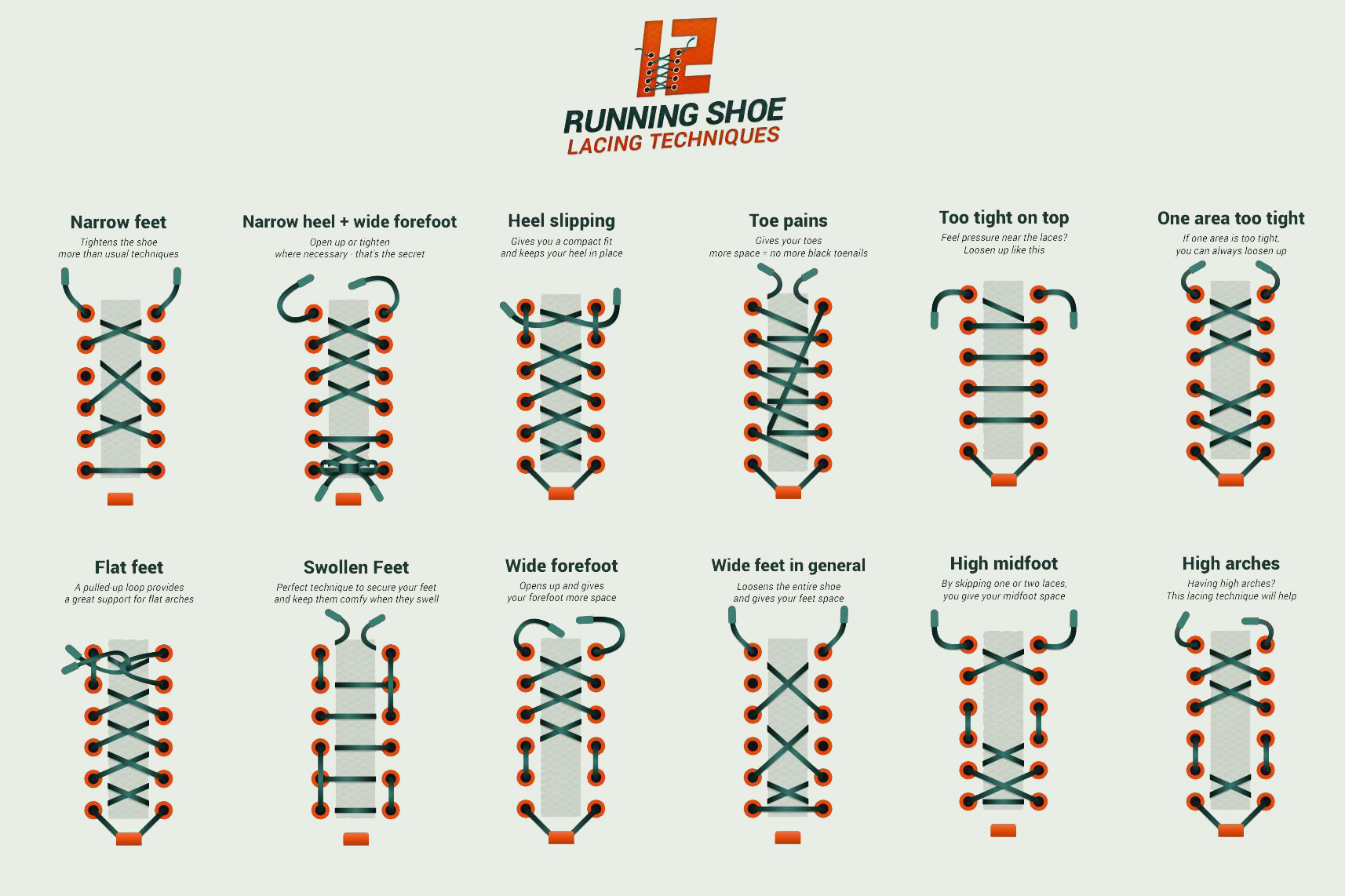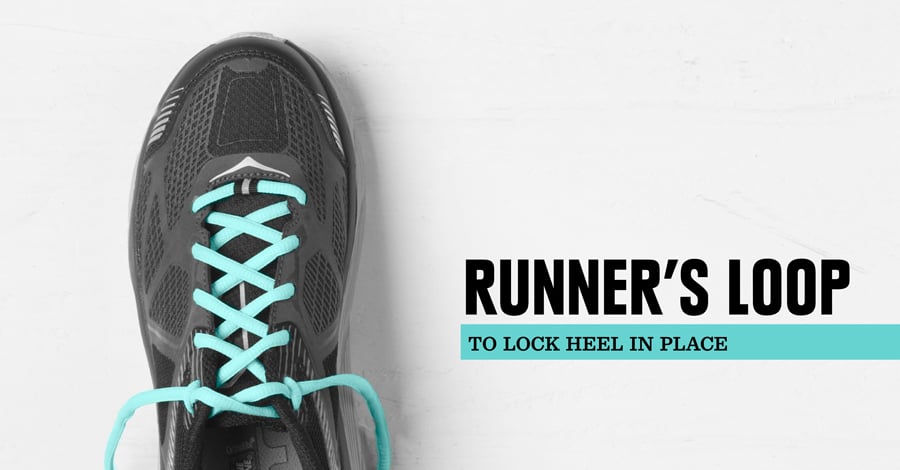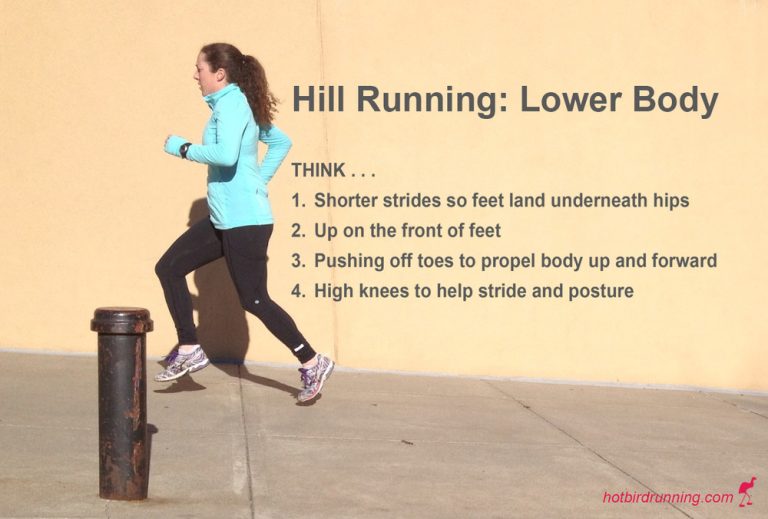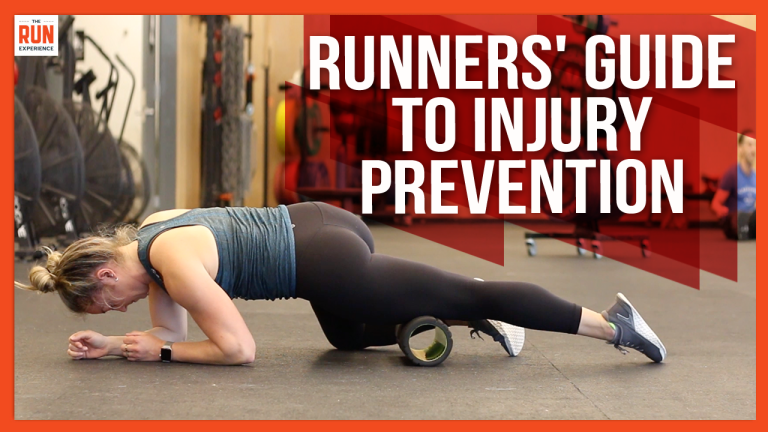How To Lace Running Shoes
To lace running shoes, begin at the bottom eyelets, crossing the laces evenly. Thread the laces through each set of eyelets, pulling tightly but ensuring comfort.
Lacing your running shoes properly can significantly impact your performance and overall comfort during your run. Whether you prefer a snug fit or a looser feel, the way you lace your shoes can make a difference in preventing blisters and keeping your feet secure.
Understanding the various lacing techniques and how they can cater to your specific foot shape and running style is essential for a successful and enjoyable running experience. By following the right lacing methods, you can optimize the fit of your running shoes and enhance your running performance.
Choosing The Right Laces
When it comes to lacing running shoes, choosing the right laces is an important consideration that can significantly impact your comfort and performance. The right laces can provide the perfect fit, reduce the risk of injury, and ensure your shoes stay securely fastened throughout your run. Here are the key factors to consider when selecting the ideal laces for your running shoes.
Length And Width
When choosing laces for your running shoes, the length and width play crucial roles in ensuring a proper and secure fit. It’s important to select laces that are long enough to allow for your preferred lacing method while also providing enough length for a comfortable tie. Additionally, the width of the laces can determine their durability and ability to stay tied securely. Thicker laces tend to be more durable and less likely to come untied during vigorous activity.
Material And Durability
The material of the laces is another key consideration. Opt for laces made of high-quality materials such as nylon or polyester for durability and longevity. These materials are also relatively resistant to stretching, ensuring that your laces maintain their integrity over time. Additionally, look for laces that feature a secure weave pattern, which can further enhance their durability and resistance to fraying.
Basic Lacing Techniques
Lacing your running shoes properly is essential for comfort and performance. Here are some basic lacing techniques that can help you achieve a secure and comfortable fit.
Over-under Lacing
This method involves lacing the shoe in an alternating pattern of going over and under the eyelets. It helps alleviate pressure points and can be useful for runners with wider feet.
Criss-cross Lacing
Criss-cross lacing is the most common technique where the lace runs straight across and diagonally. It provides a secure fit and distributes pressure evenly across the foot.
Specialized Lacing Techniques
Discover specialized lacing techniques to optimize your running shoe fit and comfort. Learn how to lace your shoes for better stability, reduced heel slippage, and enhanced performance on the track or trail.
These specialized lacing techniques can significantly improve the fit and comfort of your running shoes.Heel Lock Lacing
This technique secures the heel area of the shoe to prevent slippage during running.Runner’s Loop Lacing
Runner’s Loop Lacing creates an extra loop at the top of the shoe for a customizable fit. When lacing your running shoes, ensure a snug but not overly tight fit for optimal performance. Consider trying different lacing methods to find the one that offers the best support and comfort. Proper lacing techniques can enhance your running experience and prevent injuries. Experiment with these specialized lacing methods to find the one that suits your needs. Ensure to adjust the lacing tension based on your comfort level and running style. Maintain a balance between a secure fit and allowing proper circulation to avoid discomfort. Optimal lacing can enhance your running performance and prevent discomfort during long runs. Customize your lacing technique to achieve the perfect fit for your unique feet.
Credit: gearjunkie.com
Preventing Lace Pressure Points
Loop Skipping Technique
Loop skipping technique is an excellent way to reduce pressure points on the top of the foot. By strategically skipping lace loops, runners can alleviate discomfort and prevent undue pressure.
Lace Lock Technique
Lace lock technique involves creating a secure hold at the top of the shoe to distribute pressure evenly across the upper foot, minimizing the risk of pressure points and discomfort during a run.
Customizing Your Lacing Style
Learn to customize your lacing style for running shoes to achieve the perfect fit and support. Experiment with different techniques like heel lock and runner’s loop to relieve pressure points and prevent slippage during your runs. Mastering these lacing methods can help improve your overall running experience and performance.
When it comes to running shoes, finding the perfect fit is crucial for comfort and performance. While shoe manufacturers provide standard lacing patterns, sometimes they just don’t work for everyone. That’s where customizing your lacing style comes in. By adjusting the way you lace your running shoes, you can alleviate pressure points, reduce slippage, and ensure a snug fit that suits your unique foot shape and running style. This article will explore two popular lacing styles for running shoes: Checkerboard Lacing and Straight Bar Lacing.
Checkerboard Lacing
If you’re looking for a lacing style that adds stability and support, checkerboard lacing may be your perfect fit. This lacing technique involves alternating diagonal lines of laces on each side, resembling a checkerboard pattern.
To achieve the checkerboard lacing style, follow these simple steps:
- Begin by threading the laces through the bottom eyelets of your running shoes as you would with traditional lacing.
- On each side, cross the lace over and insert it into the opposite eyelet, creating an ‘X’ shape.
- Continue this pattern, alternately crossing the lace over and inserting it into the opposite eyelet until you reach the top.
- Tie your shoes using your preferred method.
Checkerboard lacing not only adds a unique aesthetic element to your shoes but also helps distribute pressure evenly across the foot. This technique is especially beneficial for runners with wide feet or those who experience discomfort and slippage in the midfoot area.
Straight Bar Lacing
If you’re seeking a simple yet effective lacing style, straight bar lacing is an excellent option. This technique involves lacing the shoes in a straight line, providing a secure fit without any complicated knotting or twisting.
To achieve the straight bar lacing style, follow these steps:
- Begin by threading the laces through the bottom eyelets of your running shoes.
- On each side, insert the lace straight across into the opposite eyelet.
- Continue this pattern, lacing straight across on each side until you reach the top.
- Tie your shoes using your preferred method.
Straight bar lacing is a practical and straightforward technique that eliminates excess pressure on the top of the foot and provides a secure fit, perfect for runners who prefer a snug and streamlined lacing style.

Credit: www.self.com

Credit: www.rei.com
Frequently Asked Questions For How To Lace Running Shoes
How Should I Lace My Running Shoes For Optimal Performance?
To enhance performance, start by tightly lacing your shoes from the bottom, gradually increasing tension towards the top.
What Is The Best Lacing Technique For Preventing Heel Slippage?
To prevent heel slippage, try the “lace lock” technique: create a loop with the laces on each side and cross them, then pull them tightly.
How Can I Relieve Pressure On The Top Of My Foot While Lacing My Shoes?
To alleviate pressure on the top of your foot, use the “window lacing” technique: skip lacing a few eyelets on the middle part of the shoe.
Conclusion
Incorporating the right lacing technique for your running shoes can greatly enhance your performance and comfort. By following the steps and choosing the suitable style for your foot type, you can optimize your running experience. Take the time to experiment and find the lacing method that works best for you, allowing you to enjoy your runs to the fullest.





